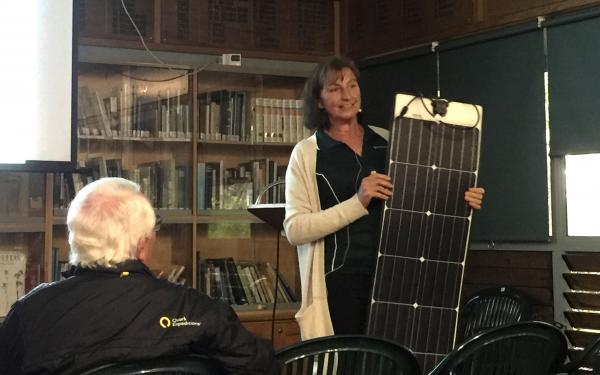With only five years remaining to meet Noosa Council’s zero emissions target by 2026 Council’s Carbon Reduction Officer Annie Nolan provided an update on progress at Noosa Parks Association’s last Friday forum.
Annie, who has worked on the project for the past four years, said project was progressing on two fronts – climate action and climate mitigation.
In 2016 council put into place the Carbon Emissions Reduction Policy to look at its own emissions before showing leadership for the community, she said.
In the same year Zero Emissions Noosa (ZEN Inc) established itself to lead the charge for council to include the community in the 2026 zero emissions target.
In 2017 Noosa Council joined Cities for Power Partnership, a network or more than 140 local governments working together for climate change.
In 2019 Noosa Council declared a Climate Emergency, joining a move that began in Victoria that took on the advice of scientists that aiming for zero emissions in 2050 was “not good enough“.
But with state and federal governments lagging behind, council’s 2026 target requires state and federal governments remove barriers for them to achieve their goal.
“At the local level is where climate change is happening,” Annie said.
She said under council’s Environment Strategy climate consideration had been incorporated into every council action.
So where do council’s emissions come from?
Electricity use, vehicles, destruction of vegetation, purchasing and by far the greatest emitter, landfill.
Using a carbon accounting standard measurement Annie has completed council’s carbon inventory or footprint. The measure includes items purchased that take into account the carbon created during both production and transportation.
Council’s annual emissions equate to about 55,000 tons of carbon dioxide (CO2) and the community emissions have been estimated by ZEN to be about 500,000 tons of CO2.
After determining the cause of emissions Annie’s role has focused on its reduction by working on projects aimed at energy efficiency and the use of renewable energy.
To date 628 kilowatt producing solar panels have been installed on council buildings and facilities including the Cooroy and Noosa libraries and Noosa Leisure Centre.
Annie said the renewable power has resulted in a 50 per cent reduction in the use of coal-fired power.
“$500,000 has been saved in electricity since the panels were installed three years ago,” she said. “The cost of the systems are paid back in four years.”
Some changes that are more difficult to make are behavioural with Annie both encouraging and shaming people into “turning everything off” at the end of the day.
But by far the biggest challenge for council is landfill which makes up 60 per cent of its emissions with organic waste producing methane which has 25 times the global warming potential of CO2.
What is council doing about landfill emissions?
“We made green bins available to residents. We extract landfill gas. It gets sucked up to a flare where the gas is burned changing methane in to CO2 which is less potent,” Annie said.
“We’ve been installing more pipes to extract more landfill gas increasing extraction by 50 per cent on the previous year and we have looked at generating power from the gas.” But by far the reduction in green waste before it gets to landfill is preferable, but that requires the action of residents and education on waste reduction.
Next steps on the project are to look at emissions from council purchasing and the generating of offsets of carbon emissions as well as a continued focus on electricity and transport including the installation of more electric vehicle charging stations and public transport options.
“We have made some progress but we have a fair way to go to get to zero,” Annie said.







